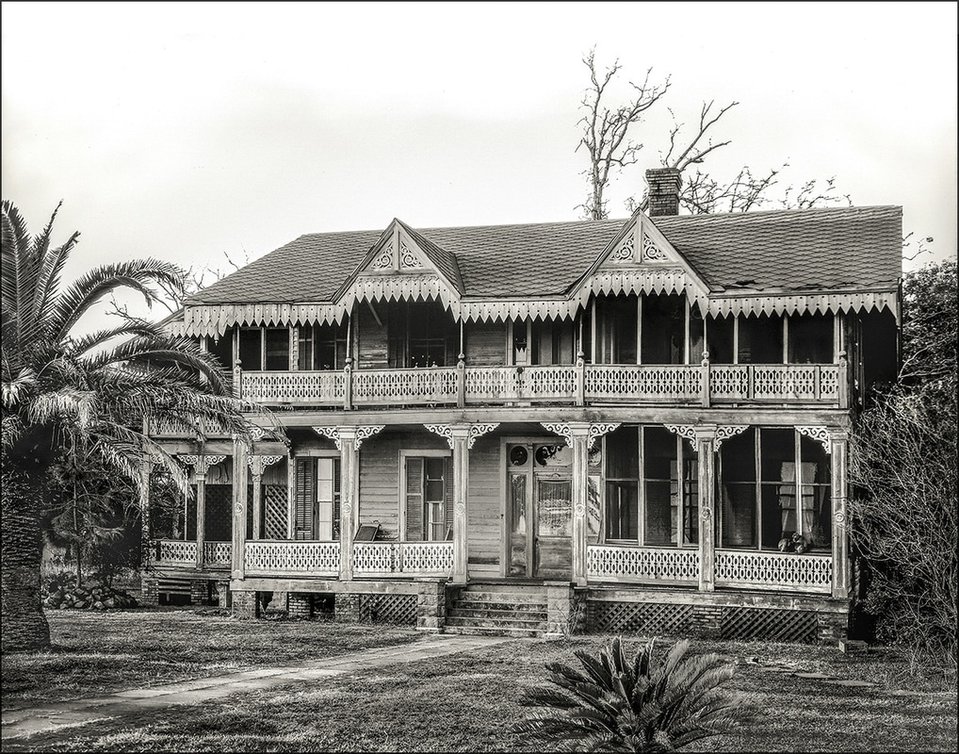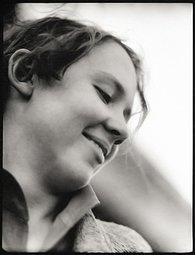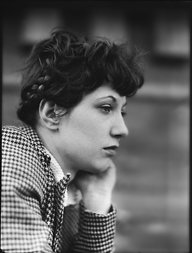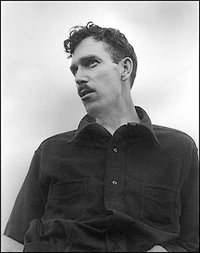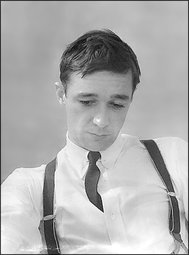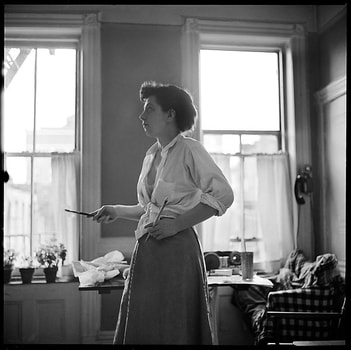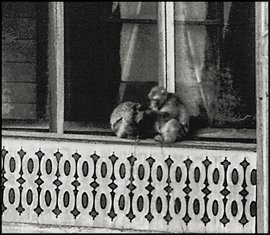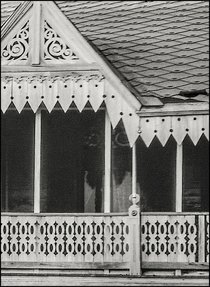Walker Evans
1903 - 1975
Walker Evans, best known for his work with the Farm Security Administration (FSA) photographing the effects of the Great Depression in the southern states. He made two very short visits to the Mississippi Gulf Coast in 1936.
The Gingerbread House, a study of decline.
The Fairchild property on the beach in Waveland, Mississippi was known as the Myrtles- the locals called it the Gingerbread House.
What's most striking about Evans' images of the Gingerbread House in 1936 is the glaring signs of decline and neglect. It started out as a small cottage but grew into a two-story a private summer resort with servant quarters added later. The decimated appearance of the Fairchild cottage in 1936 also reflects the decline of a coastal economy that was booming just 30 years earlier, about the time the Fairchild cottage was built. By 1923 the timber industry had clear-cut the state of yellow pine drying up the service jobs and towns along the railroad. The once-vibrant port of Gulfport struggled to be relevant by the 1930s, and like the Gingerbread House, fell into disrepair.
The many storms and hurricanes, and the extremely low elevation of the property in Waveland, made tidal surges and flooding a contributing factor. Louis Fairchild died in 1919, and the family home in New Orleans on St. Charles Avenue was sold to provide the necessary support for the Fairchild children, and maintaining Mrs. Fairchild's social status. But, probably less a priority was support for the staff and maintenance crew at the cottage. The Great Depression, 1929-1939, dropped everyone to their knees, rich and poor.
The many storms and hurricanes, and the extremely low elevation of the property in Waveland, made tidal surges and flooding a contributing factor. Louis Fairchild died in 1919, and the family home in New Orleans on St. Charles Avenue was sold to provide the necessary support for the Fairchild children, and maintaining Mrs. Fairchild's social status. But, probably less a priority was support for the staff and maintenance crew at the cottage. The Great Depression, 1929-1939, dropped everyone to their knees, rich and poor.
Walker Evans was in New Orleans when he met Christine Fairchild, and invited to a post-Christmas social affair at the Fairchild cottage in Waveland. Evans returned a few weeks later on a cold overcast morning in January to photograph the rundown house in stunning detail. He used his Deardorff 8x10 view camera to photograph the Fairchild cottage; a rare glimpse of Walker Evans as a fine art photographer, that he always imagined himself to be.
From behind the camera, and the bedroom walls of the Gingerbread House, there's a story of moral decline, and the beginning of a sexual liberation.
Walker Evans
Arrogant, Apolitical, Artist
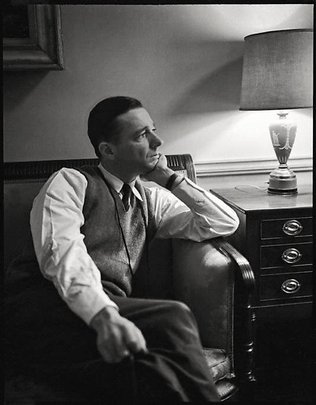 One of many self-portraits of Walker Evans.
One of many self-portraits of Walker Evans.
"The problem is one of staying out of Left politics and still avoiding Establishment patterns. I would not politicize my work. ... The apostles can't have me. I don't think an artist is directly able to alleviate the human condition. He's very interested in revealing it." James R. Mellow, PDF p.308
Walker Evans’ method of documentary photography is in stark contrast to that of Lewis Hine. Hine made a conscious effort to avoid any suggestion of staging or manipulation of his subjects, Evans had no problem directing a scene. Hine exercised some direction when photographing large groups of child laborers outside a factory, while Evans choreographed many of his subjects.
"I was interested, selfishly, in the opportunity it gave me to go around and use the camera. I did anything I pleased and ignored what I was expected to do...." Walker Evans, James R. Mellow, 1999
From 1935-38 Evans was commissioned by the Farm Security Administration to photograph/document the plight of the working class in the deep south that followed the nation's economic collapse that began in 1929. Evans lacked focus in his assignment for the FSA until he teamed up with James Agee, a writer for Fortune magazine. They traveled the dusty dirt roads of the rural south avoiding confrontations with local authorities suspicious of outsiders as communists or union organizers, and gaining the trust of some of their subjects by living with them, eating their cornbread and sleeping in their beds. In 1941 Agee authored the book, Let Us Now Praise Famous Men, using Walker Evans' photographs.
Collections of his 'work' are in The Metropolitan Museum of Art in New York City, and the Library of Congress.
Walker Evans’ method of documentary photography is in stark contrast to that of Lewis Hine. Hine made a conscious effort to avoid any suggestion of staging or manipulation of his subjects, Evans had no problem directing a scene. Hine exercised some direction when photographing large groups of child laborers outside a factory, while Evans choreographed many of his subjects.
"I was interested, selfishly, in the opportunity it gave me to go around and use the camera. I did anything I pleased and ignored what I was expected to do...." Walker Evans, James R. Mellow, 1999
From 1935-38 Evans was commissioned by the Farm Security Administration to photograph/document the plight of the working class in the deep south that followed the nation's economic collapse that began in 1929. Evans lacked focus in his assignment for the FSA until he teamed up with James Agee, a writer for Fortune magazine. They traveled the dusty dirt roads of the rural south avoiding confrontations with local authorities suspicious of outsiders as communists or union organizers, and gaining the trust of some of their subjects by living with them, eating their cornbread and sleeping in their beds. In 1941 Agee authored the book, Let Us Now Praise Famous Men, using Walker Evans' photographs.
Collections of his 'work' are in The Metropolitan Museum of Art in New York City, and the Library of Congress.
The Fairchild Family
"Privilege is an immoral and unjust thing to have. But if you've got it, you didn't choose to get it, and you might as well use it." - Walker Evans, by James R. Mellow, Google Books
The father of the family, Louis Fairchild, was Mayor of Waveland, a member of the New Orleans Cotton Exchange and the New York Cotton Exchange. Louis had 11 children, but only 6 lived to adulthood. After his death in 1918, their family home on Lee Circle in New Orleans was sold to provide his family with the security to maintain their affluent life style. Carlotta Fairchild was the second wife of Louis Fairchild, and Christine was her only child. Carlotta and family would spend their summers and weekends at the cottage in Waveland. Carlotta lived there while Christine was attending Newcomb School and Sophie Newcomb College. She would also take up residence in Boston when Christine attended the Massachusetts Institute of Technology.
For more information about Christine and the Fairchild family, visit, Mississippi Memories, and Janice Tracy
"Privilege is an immoral and unjust thing to have. But if you've got it, you didn't choose to get it, and you might as well use it." - Walker Evans, by James R. Mellow, Google Books
The father of the family, Louis Fairchild, was Mayor of Waveland, a member of the New Orleans Cotton Exchange and the New York Cotton Exchange. Louis had 11 children, but only 6 lived to adulthood. After his death in 1918, their family home on Lee Circle in New Orleans was sold to provide his family with the security to maintain their affluent life style. Carlotta Fairchild was the second wife of Louis Fairchild, and Christine was her only child. Carlotta and family would spend their summers and weekends at the cottage in Waveland. Carlotta lived there while Christine was attending Newcomb School and Sophie Newcomb College. She would also take up residence in Boston when Christine attended the Massachusetts Institute of Technology.
For more information about Christine and the Fairchild family, visit, Mississippi Memories, and Janice Tracy
Christine, Jane, Paul and Walker
Relationships of silent accommodation
Relationships of silent accommodation
All photos by W. Evans, 1935-36.
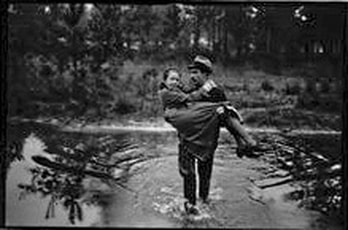 Christine Fairchild and Paul Ninas, Photo by W. Evans
Christine Fairchild and Paul Ninas, Photo by W. Evans
In 1935 Christine Fairchild was working on a restoration project in Jackson Square in New Orleans where she met and became a mistress of Paul Ninas, a well-known artist who was teaching at the newly established Arts and Crafts School at Tulane University School of Architecture. Jane Smith and Christine were classmates at Sophie Newcomb College and became close friends - Jane was also the wife of Paul Ninas. The three maintained a relationship of 'silent accommodation,' until Walker Evans makes the relationships more complicated.
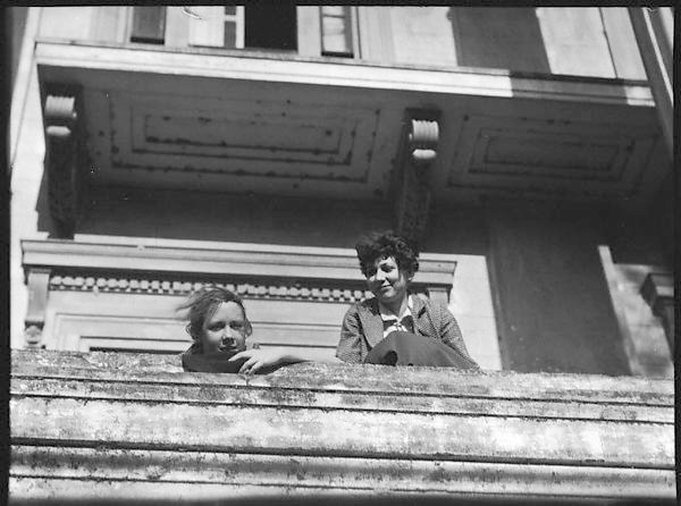 Christine Fairchild and Jane Smith photographed by Walker Evans, at Belle Grove plantation, Louisiana, March,1935.
Christine Fairchild and Jane Smith photographed by Walker Evans, at Belle Grove plantation, Louisiana, March,1935.
Walker Evans was on assignment in New Orleans in February of 1935. He stayed in an apartment owned by his current employer on the second floor of the Pontalba Building in Jackson Square where Christine was doing restoration work on the first floor.
Walker, and possibly Christine, met Paul Ninas and his wife Jane Smith in a French Quarter restaurant. They became close friends and Walker began spending time with Christine and Jane taking them along on photo shoots as assistants. By 1935 the close relationship turned into a love affair between Jane and Walker.
Christine was aware of the affair and wanted Paul all to herself. In late December of 1935, she invited Walker, Jane, and Paul to her family's summer cottage in Waveland. They took two cars, Walker and Jane in one and Christine and Paul in the other. It was cold and drafty in the old house and they spent most of their time huddled close to the fireplace deflecting the sexual tension, but no revelations... the kettle was beginning to boil.
Walker, and possibly Christine, met Paul Ninas and his wife Jane Smith in a French Quarter restaurant. They became close friends and Walker began spending time with Christine and Jane taking them along on photo shoots as assistants. By 1935 the close relationship turned into a love affair between Jane and Walker.
Christine was aware of the affair and wanted Paul all to herself. In late December of 1935, she invited Walker, Jane, and Paul to her family's summer cottage in Waveland. They took two cars, Walker and Jane in one and Christine and Paul in the other. It was cold and drafty in the old house and they spent most of their time huddled close to the fireplace deflecting the sexual tension, but no revelations... the kettle was beginning to boil.
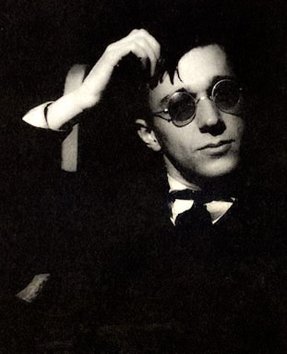 Walker Evans self-portrait Walker Evans self-portrait
Weeks later in New Orleans at Paul's apartment Paul would wave a pistol in Walker's face and demand Walker either takes Jane with him or get out of their lives. Walker grabbed his hat and left; without Jane, much to her dismay. Years later Jane would realize that Evans had not forgotten her; they were married in 1941 after her divorce from Paul.
|

